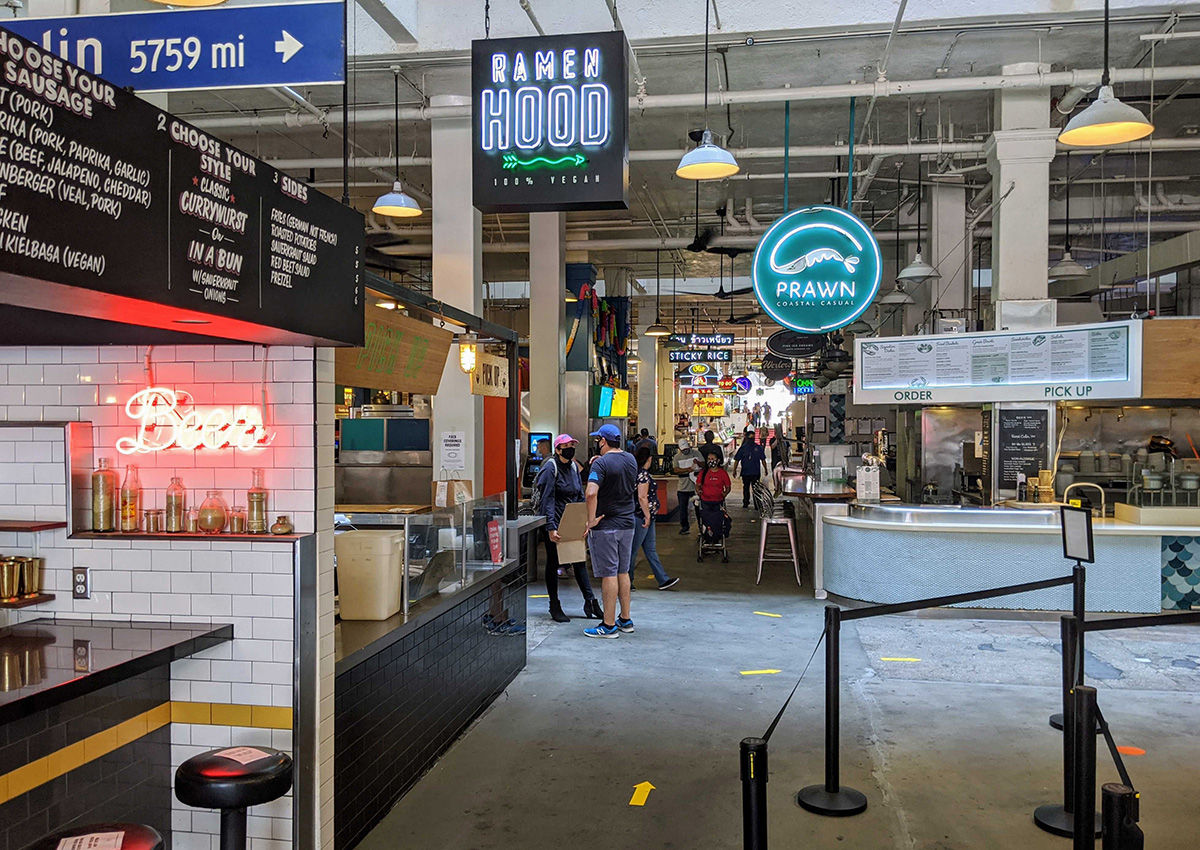
DTLA Sees Small Steps Forward, Small Steps Back
The people and places of Downtown Los Angeles have been in a state of flux since the COVID-19 pandemic disrupted our day-to-day lives. In an effort to gauge its effects on the community, we launched the DTLA Recovery Compass, a rolling survey with regular reports tracking people’s concerns and confidence regarding Downtown LA safety measures and reopening. Intended as a tool for understanding the shifting conditions, the Recovery Compass collects and contextualizes critical information that will be helpful to Downtowners and local businesses in charting the course towards recovery.
We have been polling members of the Downtown LA community every two weeks since August, with each wave including at least 300 responses collected over five days. The audience was targeted for Downtown LA and made up of its workers, residents, and local visitors. We expect to continue the study as long as COVID-19 continues to impact DTLA.
Now entering the eighth month of the pandemic, the overall situation is one of slight progress. There has been a noticeable shift since August in the willingness to engage in most activities, such as shopping at a retail store or socializing with close friends or family members. As of late October, over 52% of respondents are willing to eat at Downtown Los Angeles restaurants without hesitation. There was a slight decline in people saying they are receiving mixed messages from the media and government, and a slight uptick in how they feel Downtown has been handling COVID-19.

Although 53% of respondents feel optimistic about Downtown Los Angeles’s future, sentiments on the prevailing situation dipped in the latest wave. Events in Los Angeles such as the Lakers championship celebration and a recent spike in COVID-19 cases may have impacted how people feel about the DTLA area. While we are not specifically tracking factors unrelated to COVID-19, it seems reasonable to surmise that they influence the results as we observe how sentiments change following real-world events. For our upcoming report in December, for example, it should be considered that results may be influenced by whether or not Los Angeles County’s risk level changes, allowing for the reopening of more non-essential businesses and expanding capacity at those already open.
Despite overall affection for DTLA remaining strong with 71% of respondents saying they “love” it, Downtown is not the bustling landscape it was pre-pandemic. Over 58% of its office workers are currently working from home and out of these workers, 70% are willing to continue doing so.
As of the latest wave of our survey in late October, fewer people were optimistic about DTLA’s future or thought it was moving in the right direction. Fewer people strongly agreed that they feel like part of the DTLA community and the overall sentiment on DTLA’s handling of the pandemic declined since the initial waves of the study.
With the daytime population largely absent and local LA businesses struggling or closing as a result, negative responses to Downtown LA’s current state come as no surprise. If and when Los Angeles County moves into a less restrictive tier, we anticipate a shift in behaviors and increase in positive attitudes as limits on activities loosen and the community reopens.
Our expectation – and one of the key reasons we are regularly tracking the community’s sentiments and behaviors – is that, as these conditions improve and as office workers gradually come back Downtown, their passionate sense of community and enthusiasm will be reignited and the energy and vibrancy of the DTLA neighborhood will return.
The DTLA Recovery Compass is an ongoing study that will continue into 2021. For the latest data on real-time sentiment, emerging trends, and progress towards recovery, view the DTLA Recovery Compass report.